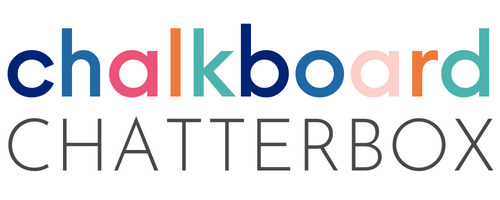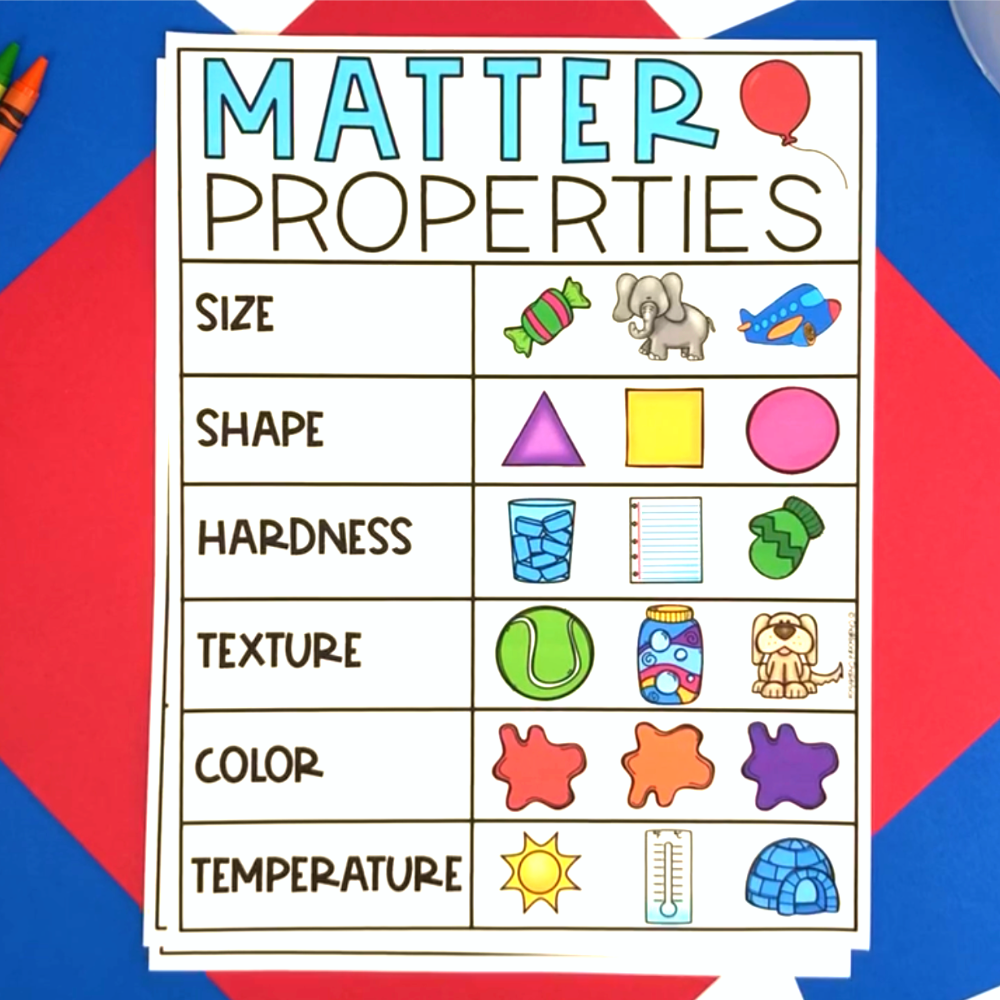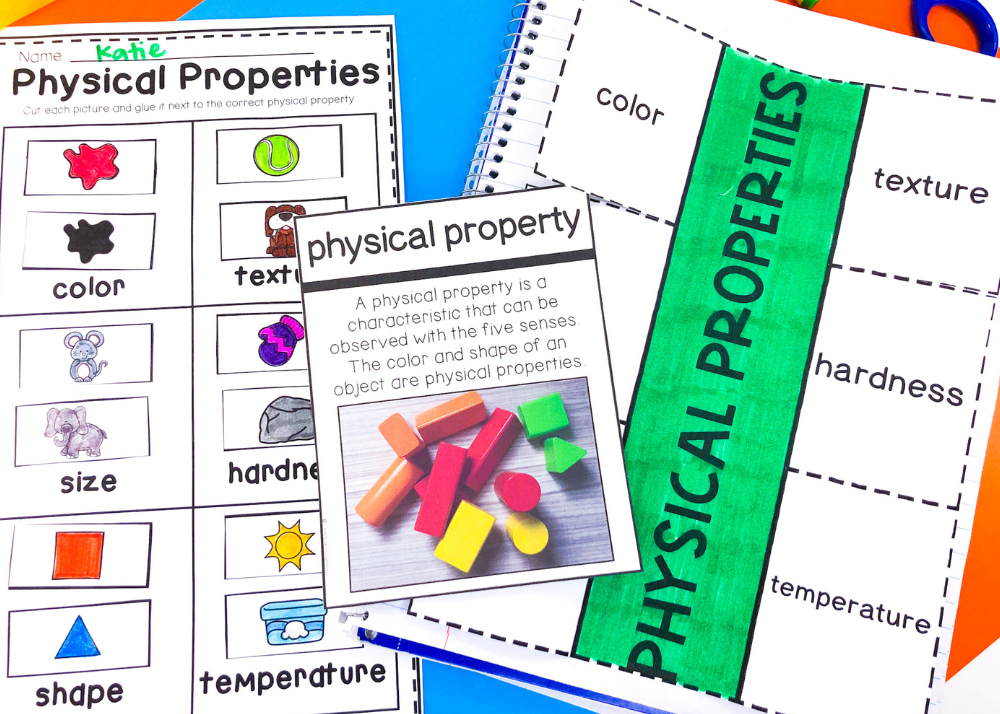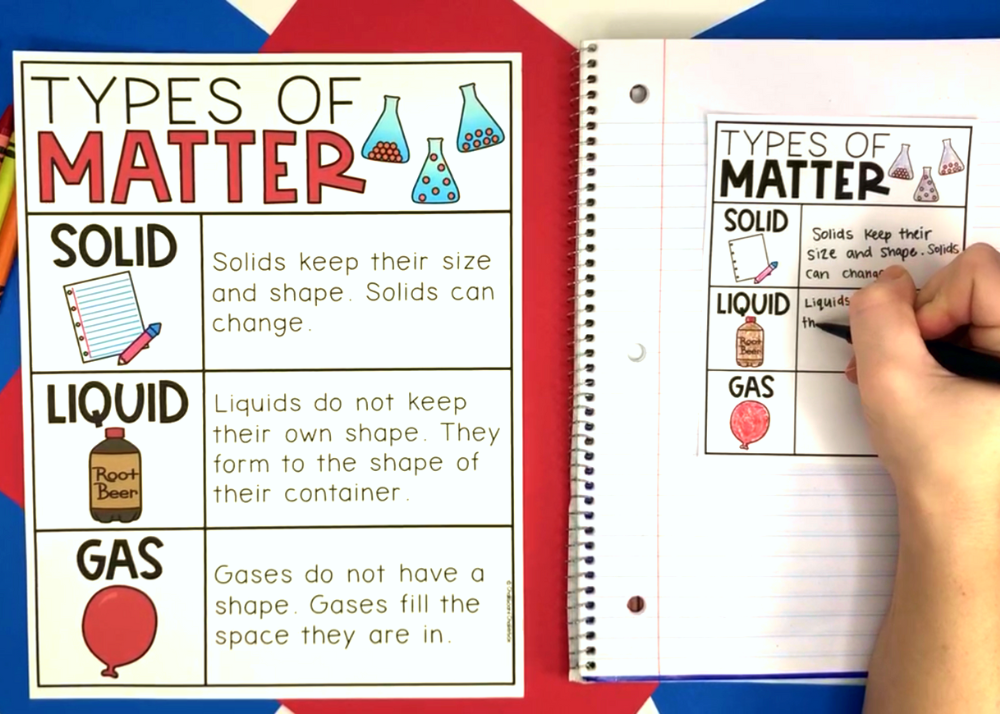States of Matter Lesson Plans and Anchor Charts
Get ready to help your little scientists explore the properties of solids, liquids, and gases. Learn about the lesson plans and activities that you can use in your science class to teach:
physical properties of matter
how to identify characteristics of solids, liquids, and gases
the ways in which matter can change from one property to another
Identify Physical Properties of Matter Lessons
Begin the unit by describing yourself or another object in the classroom using physical properties. Have students try to guess the object based on the physical properties.
Students can continue using their knowledge of physical properties to do a mystery bag exploration activity. Students will put their hand inside a bag to guess what’s inside.
Tell students that scientists use physical properties to describe how objects look and feel. Ask students to create a list of other describing words. If they haven’t started to notice a pattern, help them understand that physical properties can be grouped into categories like color, size, shape, and texture.
Students can practice finding objects in the classroom that have certain physical properties. Have a class discussion to share their discoveries.
Solid, Liquid, and Gas Class Discussion and Activities
Now that students are familiar with using physical properties to make descriptions, students can describe each state of matter.
Solids
Gather a collection of solid objects and have students discuss the ways that they objects are similar. Help students discover that each object is solid because they maintain their size, and shape. Explain that a solid object cannot be easily changed.
Liquids
Continue the discussion with a collection of liquids. Discuss the ways the liquids are similar. Help students describe the liquids using physical properties. Tell students that liquids form to the shape of the container that it’s in. Liquids do not maintain the same size and shape.
Gases
Using your small collection of gases, students will describe what the objects have in common. Help students understand that each object is filled with air, which is the most common gas. Have a class discussion to help students understand the characteristics of a gas. Tell students that a gas fills and spreads throughout a space.
Observing States of Matter Activity
Are you looking for a simple activity to help students recognize that matter is all around them? With a few objects around the classroom, your students will get to observe each state of matter.
Materials:
empty water bottle
vinegar
large tub
funnel
baking soda
balloon
Use the funnel to fill the balloon halfway with baking soda.
Pour the vinegar into the water bottle and place the water bottle into the tub.
Place the balloon over the water bottle, emptying the baking soda into the water bottle.
Observe and discuss where they see each state of matter.
How Can Matter Change to a Different Property?
When students are comfortable identifying each state of matter, they’re ready to learn about how states of matter can change.
Have a class discussion about what causes a solid to change into a liquid. You can use a cup of melting ice as a way for students to observe the change. Continue discussing how to change the liquid back into a solid. Finish by talking about what happens when a pot of water is placed onto the stove. Help students understand that the steam that rises from the pot is an example of a liquid turning into a gas.
Observing Changing Matter
What is the perfect snack to observe how matter can change? Popcorn! With this simple activity, students will observe and explain what causes popcorn to change from a kernel to a piece of popcorn.
Show students some popcorn kernels. They will write 4 physical properties to describe the kernels.
Discuss what will cause the kernels to change into popcorn.
Make the popcorn. For best results, use a popcorn maker to allow students to observe the change in action. If you don’t have a popcorn maker, observe using the video.
Give students some popcorn to observe and record 4 additional physical properties.
Wrap-Up
This information packed unit will prepare students for science units to come. Now, students will be able to observe and describe using physical properties and states of matter.
You’ll love these related posts













